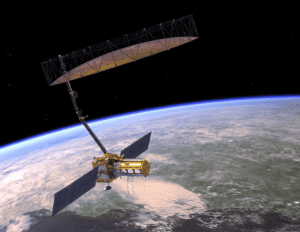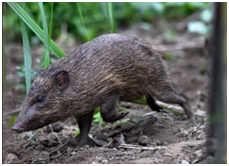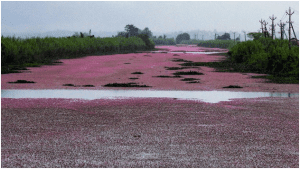A DARK MESSAGE TO DELHI FROM KANGLA FORT
THE CONTEXT: The state of Manipur has been in the grip of a civil war-like situation since May 2023, when violent clashes broke out between the Meitei and Kuki ethnic groups. Recently, it witnessed a new low of lawlessness, when the chief of an armed militia, the Ararmbai Tenggol, administered an “oath” to 37 members of the state legislative assembly and two members of the Indian parliament.
MORE ON THE NEWS:
- The six-points oath called upon the Centre to do the following:
1. Abrogate the tripartite Suspension of Agreement (SoO) that it signed with the State and Kuki-Zomi-Hmar militants since 2008
2. Implement the National Register of Citizens but using 1951 as the base year
3. Construct a border-fence across the India-Myanmar border
4. Replace the Assam Rifles with other central paramilitary forces
5. Delete ‘Kuki’ from the Scheduled Tribe list
6 .Relocate ‘Kuki refugees’ in Manipur to Mizoram
BACKGROUND:
- A Suspension of Operations agreement was signed between the Centre, the Manipur government and two conglomerates of Kuki militant outfits – the Kuki National Organisations and United Peoples Front in 2008.
- Under the agreement, the security forces as well as the militant groups are prohibited from launching operations. The militant groups must abide by the laws of the land and are also confined to designated camps identified by the Central government.
- The resolution was adopted to revoke the agreement, claiming that the immunity it provides to the armed groups from central forces is “the main cause of the never-ending cycle of violence” in Manipur.
ISSUES:
- Growing influence of Meities: The demand for ST status is a way for the dominant Meitei community from the valley area to gain political influence and control over the hill areas of the state. It aims todivert attention from the political demands of other tribal groups like the Kukis and Nagas.
- Kuki-Meitei divide: The tribal communities Kuki and the Meiteis have had ethnic tensions since the kingdom era. The Naga movement for independence in the 1950s triggered insurgencies among the Meiteis and Kuki-Zomi. The recent oath tends to provoke the already existing tensions between Kuki and Meitei.
- Eviction of Tribal Groups:One of the reasons for the discontent has been the state government’s notices since August 2022 claiming that 38 villages in the Churachandpur-Khoupum Protected Forest area are “illegal settlements” and its residents are “encroachers”.
- Escalate Violence: In the pursuit to dominate political, trade and cultural activities in the state, Kukis and Meities often engaged in violent standoffs. The recent instance can escalate more violence in the region.
- Violation of Article 371C: Kuki groups have claimed that the survey and eviction is a violation of Article 371C, which confers some administrative autonomy to the tribal-dominated hill areas of Manipur. If the demands got implemented, they would not only further expose the vulnerability of the Kuki-Zomi-Hmar groups but would also effectively erase their long-standing protective discrimination benefits.
- Political Underrepresentation of Hills: Hill populations, including Nagas, Kukis, and other tribes (40% of the population), have 19 seats in the legislative assembly. Meiteis, constituting 50% of the population, hold 60 seats. Disproportionate representation leaves Kukis and Nagas reliant on Meitei-controlled assembly, regardless of party affiliation.
- Did not mention disarmament: The reasoned public action was missing from the legislators’ public action as the six-points oath failed to mention ‘disarmament’, which was one of the four resolutions passed earlier by the Assembly. The fact that much of the arms and ammunition continue to be in the hands of armed militants across the divide, continue to be a key structural cause of this violence.
THE WAY FORWARD:
- Scheduled Tribe Status: There is a need to evaluate the criteria for ST status to Meities and Kukis in line with recommendations given by several Committees. All the features and concerns of tribal communities should be kept in view to allocate the status in order to address the grievances.
- Surveillance to prevent incursions: There is a need to bring surveillance along the border areas to prevent the incursion of the migrants from Myanmar. There is a need to maintain the identity of the people along the border areas to identify the local residence.
- Strengthening ties with countries: Strengthening economic and diplomatic ties with neighbouring countries can help enhance regional stability and security. Signing Peace settlement agreements with the local insurgent group to maintain the peace in the region.
- Democratic decision making: The government should foster the participation of the people of the region in the decision-making process to instill a sense of ownership and belonging.
- Multifaceted approach: To forge a path toward peace, a multifaceted approach involving political will, inclusive dialogue, and equitable policies is essential. Manipur’s diverse communities must collectively address the root causes, fostering a spirit of unity and cooperation for a harmonious future.
THE CONCLUSION:
The recent oath taking event by Meitei legislators under the gaze of a militia group in Imphal can have larger implications for the state of Manipur. To address the issue there is an urgent need for meaningful dialogue and confidence-building measures among stakeholders.
UPSC PREVIOUS YEAR QUESTIONS
Q.1 What are the two major legal initiatives by the State since Independence addressing discrimination against Scheduled Tribes (STs)? (2017)
Q.2 Why are the tribals in India referred to as ‘the Scheduled Tribes’? Indicate the major provisions enshrined in the Constitution of India for their upliftment. (2016)
MAINS PRACTICE QUESTION
Q. Examine the consequences of a recent oath administered to the members of state legislative assembly by the chief of an armed militia in Manipur. What steps need to be taken to address the grievances of the stakeholders and restore peace and harmony in this part of the northeastern region?
















